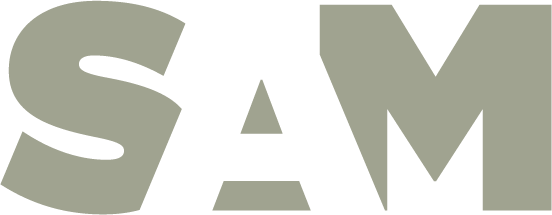


Sheet metal, wire, and paint, 21 × 9 × 27 in., Promised gift of Jon and Mary Shirley, photo: Nicholas Shirley, Brightwood Photos.
Select individual objects below to learn more about each. Use the filter to sort or jump to a random object.

Squarish, 1970
Acquired 1988

Tamanoir jaune, 1963
Acquired 1989

Yellow Stalk with Stone, 1953
Acquired 1990

Gamma, 1947
Acquired 1992

Derriere le Miroir, No. 31, 1950
Acquired 1992

Bougainvillier, 1947
Acquired 1995

JS key ring, ca. 1955
Acquired 1995

Black, White, Yellow and Brass on Red, 1959
Acquired 1995

Vache, ca. 1930
Acquired 1997

Untitled, 1970
Acquired 1997

Red Curly Tail, 1970
Acquired 1997

Untitled, ca. 1953
Acquired 1997

Untitled, ca. 1938
Acquired 1998

Jonah and the Whale, ca. 1940
Acquired 1998

Rock, 1945
Acquired 1998

Untitled, ca. 1948
Acquired 1998

Two White Dots, 1973
Acquired 1998

Untitled, ca. 1948
Acquired 1999

Crinkly Crocodile, 1971
Acquired 1999

Little Yellow Panel, ca. 1936
Acquired 1999

Dispersed Objects with Brass Gong, 1948
Acquired 1999

Polychrome Dots and Brass on Red, 1964
Acquired 1999

Untitled, 1947
Acquired 1999

Grasshopper, ca. 1952
Acquired 1999

Untitled, 1947
Acquired 2000

Bird, 1968
Acquired 2000

Crinkly Red and Black, 1964
Acquired 2001

Untitled (Métaboles), 1969
Acquired 2002

Toile d’araignee, 1965
Acquired 2002

Moons and Waves, 1963
Acquired 2002

Animated Coat Hanger, 1927
Acquired 2003

Untitled, 1952
Acquired 2003

Untitled (maquette), ca. 1960
Acquired 2004

Fables of Aesop: According to Sir Roger
L’Estrange, 1931, 1964
Acquired 2005

Untitled (Man on Ladder with Troupers), 1931/1964
Acquired 2007

Untitled (Juggler with Dog), 1931/1964
Acquired 2007

Untitled (Jongleurs), 1931/1964
Acquired 2007

Untitled (The Catch I), 1931/1964
Acquired 2007

Untitled (Men Pursuading Elephant), 1931/1964
Acquired 2007

Untitled (Man on Ladder), 1932/1964
Acquired 2007

Untitled (Tightrope and Animals), 1932/1964
Acquired 2007

Fish, 1942
Acquired 2011

Untitled, 1968
Acquired 2012

Constellation with Red Knife, 1943
Acquired 2013

Untitled, 1936
Acquired 2015

Untitled, ca. 1950
Acquired 2015

Untitled, 1956
Acquired 2015

Untitled, 1960
Acquired 2015

Untitled, ca. 1956
Acquired 2016

Rat, 1948
Acquired 2016

Bird, ca. 1940
Acquired 2019

Untitled, ca. 1942
Acquired 2021

The Yellow Disc, 1958
Acquired 2022

Femme assise, ca. 1929
Acquired 2022